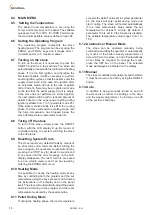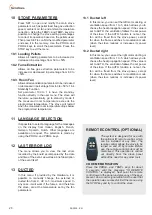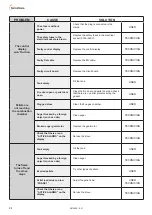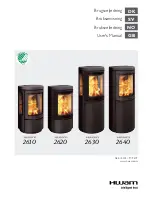
IT
ALIANO
ENGLISH
9
08/2020 - EN
3 CHARACTERISTICS OF FUEL
3.1 FUEL CHARACTERISTICS
The pellet (fig. 3.1) is composed of various types
of wood, compressed using mechanical processes
in accordance with environmental protection laws
and is the only type of fuel intended for this type of
stove.
The efficiency and thermal potential of the stove
may vary depending on the type and quality of the
pellets used.
We recommend the use of class A1 pellets
(ISO 17225-2, ENplus A1, DIN Plus or NC 444
category "High Performance NF Pellets Biofuels
Quality").
The stove is equipped with a pellet holding tank
having the capacity indicated in the technical
specifications table in section 14.
The loading compartment is positioned in the upper
part. It must always be openable in order to load
the pellets and must remain closed during stove
operation.
For reasons of operating temperature control,
traditional wood operation is not possible.
It is forbidden to use the stove as a waste
incinerator.
3.2 STORAGE OF PELLETS
The pellets must be stored in a dry environment
where the temperature is not too cold.
It is recommended to keep a few bags of pellets in
the room where the stove is used, or in a nearby
place provided the temperature and humidity are
acceptable.
Wet and/or cold pellets (5°C) reduce the thermal
potential of the fuel resulting in the need for more
cleaning maintenance of the burn pot (unburned
material) and of the firebox.
Pay particular attention to the storage and handling
of pellet bags. Their crushing and the formation of
sawdust must be avoided.
If sawdust is introduced into the stove's tank, this
could cause the pellet loading system to become
blocked.
Keep the fuel at a safe distance from the stove.
The use of poor quality pellets can compromise the
normal operation of the pellet stove and result in
forfeiture of the warranty.
4 HANDLING AND TRANSPORT
The stove is delivered complete with all the parts
provided.
Pay attention to the tendency to unbalance the
stove.
The centre of gravity of the stove is moved towards
the front.
Bear in mind the above also when moving the stove
on the transportation support.
During lifting, avoid jerking or abrupt movements.
Make sure the forklift truck has a capacity greater
than the weight of the stove to be lifted.
The full responsibility of the lifting of loads lies on
the person handling the lifting equipment.
Make sure that children do not play with the
components of the packaging (e.g. films and
polystyrene). Danger of suffocation!
4.1 REMOVAL FROM THE SHIPPING
PALLET
To remove the stove from the transport pallet, follow
the instructions on page 34.
Fig. 3.1










































